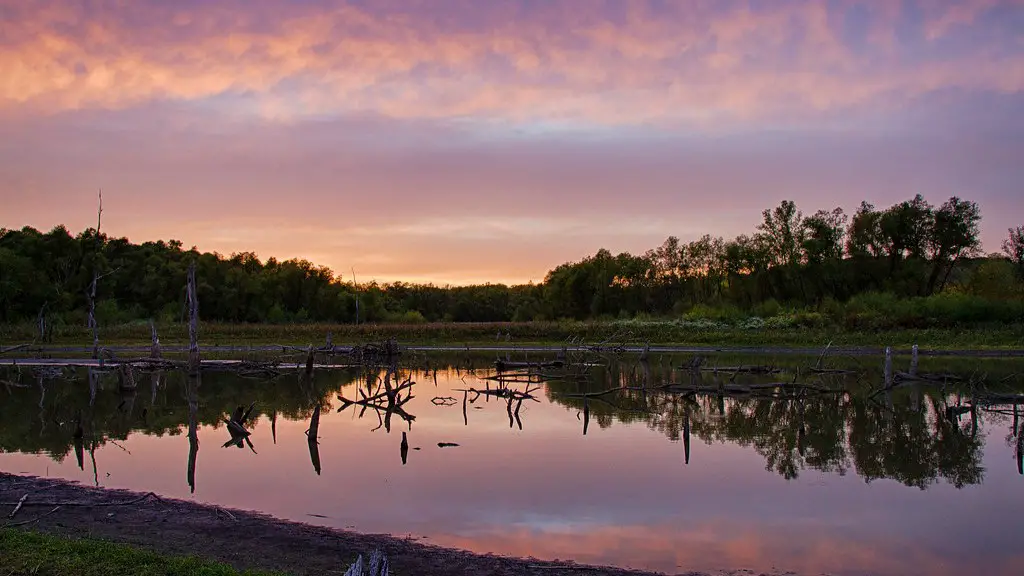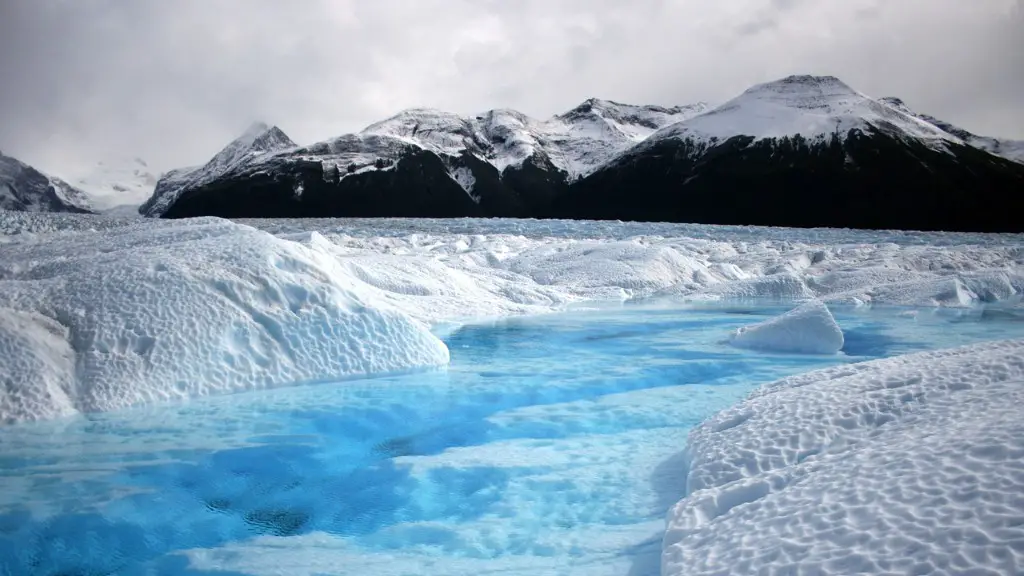The Formation of the Mississippi River Delta
The Mississippi Delta is one of the most unique and remarkable landforms in the world. It is the world’s third-largest delta and the fourth-largest river system in the United States. The delta covers an area of more than 50,000 square miles, stretching from Louisiana to the Gulf of Mexico. The Mississippi Delta has an incredibly rich and diverse history, shaped by the forces of the Mississippi River and the region’s environment.
Environmental Forces of the Mississippi Delta
The environmental forces that shaped the Mississippi Delta have been studied extensively. Scientists have identified five key environmental forces that drove the formation of the delta: the depth of discharge, the velocity of discharge, river sediment load, sea level changes, and tidal imprint.
The depth of discharge has a major role in the formation of the delta. When the Mississippi River discharged at shallow depths, the river would form ponds in backwaters and distributaries, resulting in deposition of sediment to create a shallow delta.
The velocity of the discharge also played a role in the formation of the delta. As the water velocity slowed, more sediment was deposited. The river would then start to meander and form meander scars, which created levees that helped contain the water and keep sediment in.
The sediment load of the Mississippi River is also important to the formation of the delta. As the river deposits its sediment, the area is constantly changing. This sediment load helps create the sand bars and barrier islands that are so characteristic of the delta.
Sea level changes are also a major factor in the formation of the delta. As sea levels have risen, the delta has been subject to flooding, which results in the deposition of more sediment, creating more land in the delta.
Finally, the tidal imprint of the delta is also an important factor. The river is subject to strong tides from the Gulf of Mexico, which helps create the large waves and currents that shape the character of the delta.
Human Activity and the Mississippi Delta
Human activity has also played a major role in the formation of the Delta. The majority of the delta is composed of land created by the flooding of the river, but the area has also been subject to a wide range of human modifications. This includes activities such as dredging the river, building levees, and channeling the river. These activities have drastically changed the landscape of the delta, resulting in an area with a very different topography than what existed before.
In addition to changes in the landscape, human activity has also caused changes in the ecology of the delta. For example, canal dredging has caused the loss of wetland habitat for fish and wildlife, as well as reducing the rate of sediment deposition. Dredging has also reduced the amount of sediment being deposited, leading to the decline of many species.
Finally, human activities have resulted in the release of pollutants into the delta, resulting in further ecological damage. In particular, nutrients such as nitrogen and phosphorus from fertilizer runoff have been linked to increased algal blooms in the delta, as well as to declining fish populations.
Conclusion
In conclusion, the formation of the Mississippi Delta is a fascinating example of how geological and environmental forces can shape the landscape. The delta was subject to a wide range of human activities over the years, which have had a significant impact on the landscape and ecology of the area. Overall, the Mississippi Delta is a remarkable example of how natural forces and human activities can shape the environment.
The Economic Impact of the Mississippi Delta
The Mississippi Delta is an economic hub that is vitally important to the US economy. The region has a diverse portfolio that includes energy, manufacturing, and tourism. It is home to several major ports, oil and gas refineries, agricultural operation, and the aerospace industry. The economic importance of the delta is reflected in its high level of economic output and its high-income households.
The region is home to several major cities, including New Orleans, Baton Rouge, and Biloxi. The city of New Orleans has a thriving tourism industry and is also an important port city. The energy sector is also an important economic driver in the region, thanks in part to the numerous oil and gas refineries that operate in the area.
Furthermore, the region is home to a vibrant agricultural sector, which supports the local economy. This sector is responsible for a large percentage of the region’s GDP, and employs a large number of people. The agricultural sector is also a major exports, with products such as cotton, soybeans, and corn being exported to other parts of the world.
Finally, the region is home to the aerospace industry, which is responsible for the development and production of aircraft and other aerospace products. This sector is an important source of employment and economic activity in the region.
The Social Impact of the Mississippi Delta
The Mississippi Delta is an important social and cultural hub in the US and the region is home to a variety of cultural traditions and customs. The area is known for its music and art, with many renowned artists hailing from the Delta. In addition, the region is home to a large African-American population, which is reflected in its vibrant music and art scene.
Furthermore, the region is home to a large number of historical sites that date back to early settlement of the area. These sites are important to the local community as they provide an insight into the history and culture of the region. In addition, the region also provides education and health care to the local population, which is an important source of employment for many people.
Finally, the region is home to a number of environmental initiatives that are focused on preserving the unique ecosystems of the Delta. This includes protection of endangered species, restoration of wetlands, and promotion of sustainable farming practices. These initiatives are helping to ensure the long-term health and sustainability of the Delta.
The Impact of Climate Change on the Mississippi Delta
The Mississippi Delta is one of the most vulnerable regions to the impact of climate change. Sea levels in the area are rising as a result of climate change, as well as an increase in the frequency and severity of extreme weather events such as hurricanes and floods. These changes have had a devastating effect on the region, resulting in the destruction of coastal wetlands, damage to infrastructure, and a loss of livelihoods.
In addition, the Delta is particularly susceptible to sea level rise due to its low elevation. This has resulted in saltwater intrusion, flooding, erosion, and the destruction of habitats for both humans and wildlife. In addition, the Delta is also at risk of further damage due to its low elevation, as storm surge from hurricanes and other extreme weather events are able to travel further inland than normal.
Furthermore, climate change is having an impact on the region’s ecology. Warmer waters and an increase in harmful algal blooms have caused the destruction of coral reefs, which are vital to the health of the region’s aquatic ecosystems. Warmer waters have also caused an increase in the occurrence of floods, which have caused displacement of people and destruction of property.
Finally, climate change is also causing changes in the region’s weather patterns, with an increase in the frequency and intensity of storms and floods. These changes in weather conditions are further contributing to the destruction of the Delta’s wetlands and habitats and the displacement of people.
Conclusion
In conclusion, the Mississippi Delta is a unique and remarkable landform, shaped by the powerful combination of geological, environmental, and human forces. There is a strong economic and social presence in the region and it is home to a vibrant and diverse culture. However, the region is at risk from the devastating impacts of climate change, and these impacts have had a significant impact on the region and its population.





